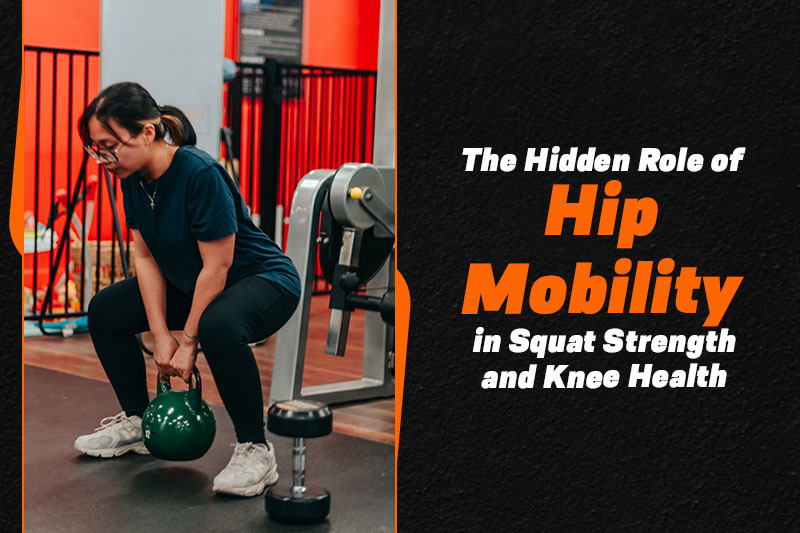ALWAYS OPEN 24/7

The majority of lifters aim to improve their squat by strengthening their quads, increasing the volume of their training, or increasing the amount of weight they lift. All of those things matter, however, one prominent variable that often determines whether one's squat is strong and powerful, or weak and painful, is hip mobility. When talking to some of my peers who work at facilities such as kahma gym, we commonly see an improvement in hip mobility leading to stronger and cleaner squats, and better knee health in the long-run.
The hips serve as the primary hinge when squatting. They dictate how deep one can descend into the squat, how the knees track relative to the feet, and how well the muscles are able to create force in an effective manner. Often times, when there is a lack of mobility around the hips, the body compensates by leaning forward, rounding the low back, and creating strain around the knee joint.
Improving mobility here allows:
These qualities directly improve squat output and reduce discomfort.
The hips control knee alignment. When mobility is restricted, the knees often drop inward (valgus collapse), increasing wear on tendons and cartilage over time. This is where many lifters begin to feel patellar tracking pain or joint irritation.
Good hip rotation allows the knees to move outward along a safe, natural path. Trainers at a fitness center Shepparton often evaluate this pattern first, since long-term knee discomfort commonly originates at the hip.
If your hip mobility is limited, you may notice:
These symptoms tend to appear gradually, making them easy to ignore until performance stalls.
Strong hips aren’t just flexible — they must move freely and generate control throughout the range of motion. Better hip mobility improves:
With improved mobility, lifters feel more confident sitting into deeper positions without losing tension. This leads to safer progression and better technique under heavier loads.
You don’t need complex routines. A few focused strategies go a long way:
1. Controlled Hip Rotation Drills
Prepares the joint capsule for movement and improves knee tracking.
2. Glute Medius Strength Work
When this muscle is weak, the knees collapse inward.
3. Squat Holds
Holding a comfortable depth position helps your nervous system accept deeper ranges.
Small sessions performed consistently outperform occasional long stretches. Many personal training Shepparton programs now integrate these between warm-up sets.
If you feel pain, loss of balance, or persistent tightness, professional assessment can help. Coaches can identify which hip movement — flexion, rotation, or abduction — is holding you back. At kahma gym, mobility insights are often integrated into squat programming to balance strength, control, and joint safety.
Expert eyes reduce guesswork and can prevent injuries before they develop.
Hip mobility plays a silent yet crucial role in squat performance and knee health. When mobility is limited, the knees absorb stress they were never designed to handle. Improving hip function:
Instead of only adding weight to the bar, focus on how your body moves. Strong hips are the gateway to a safer, stronger, and more efficient squat — and they support long-term training longevity.